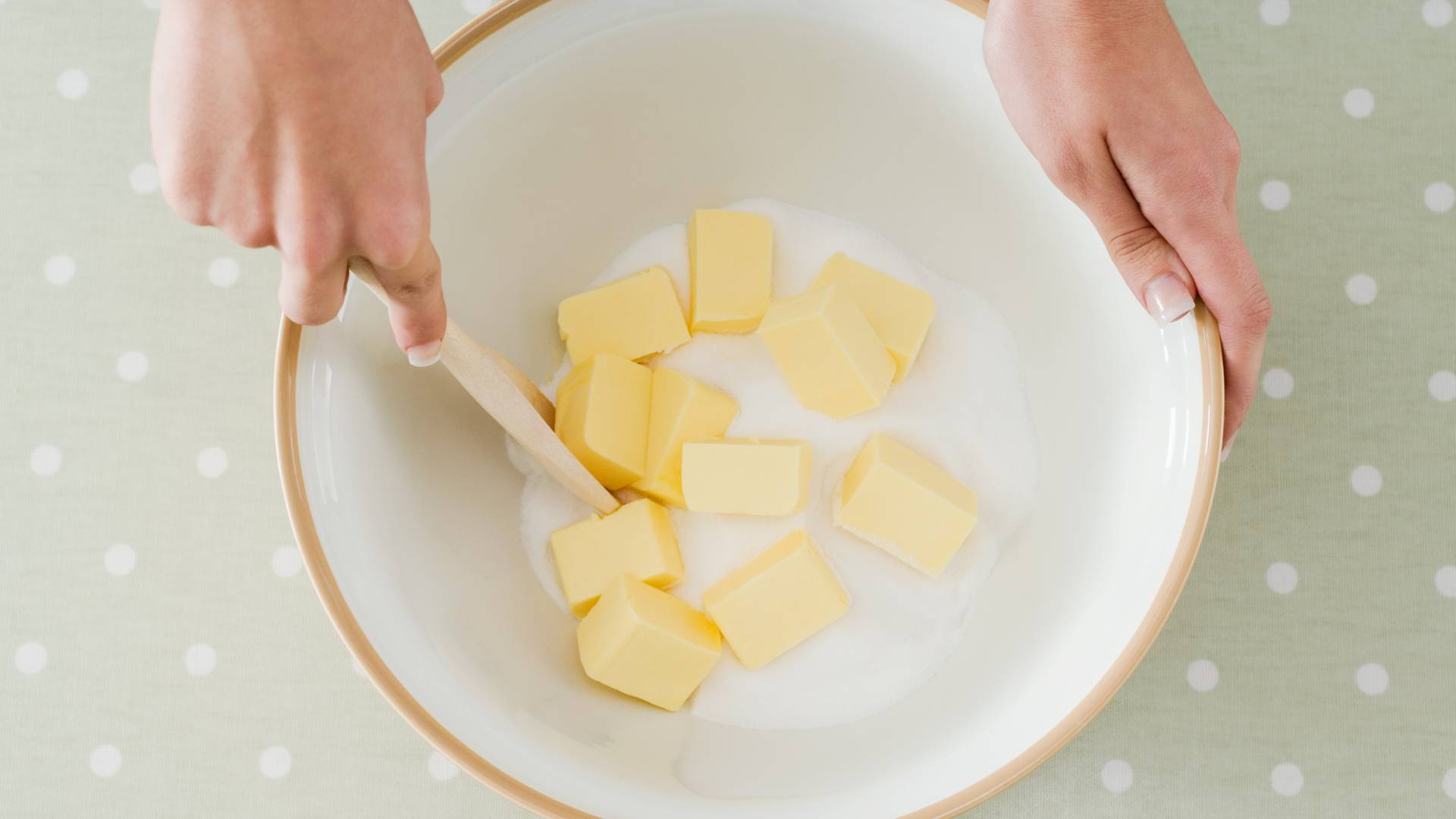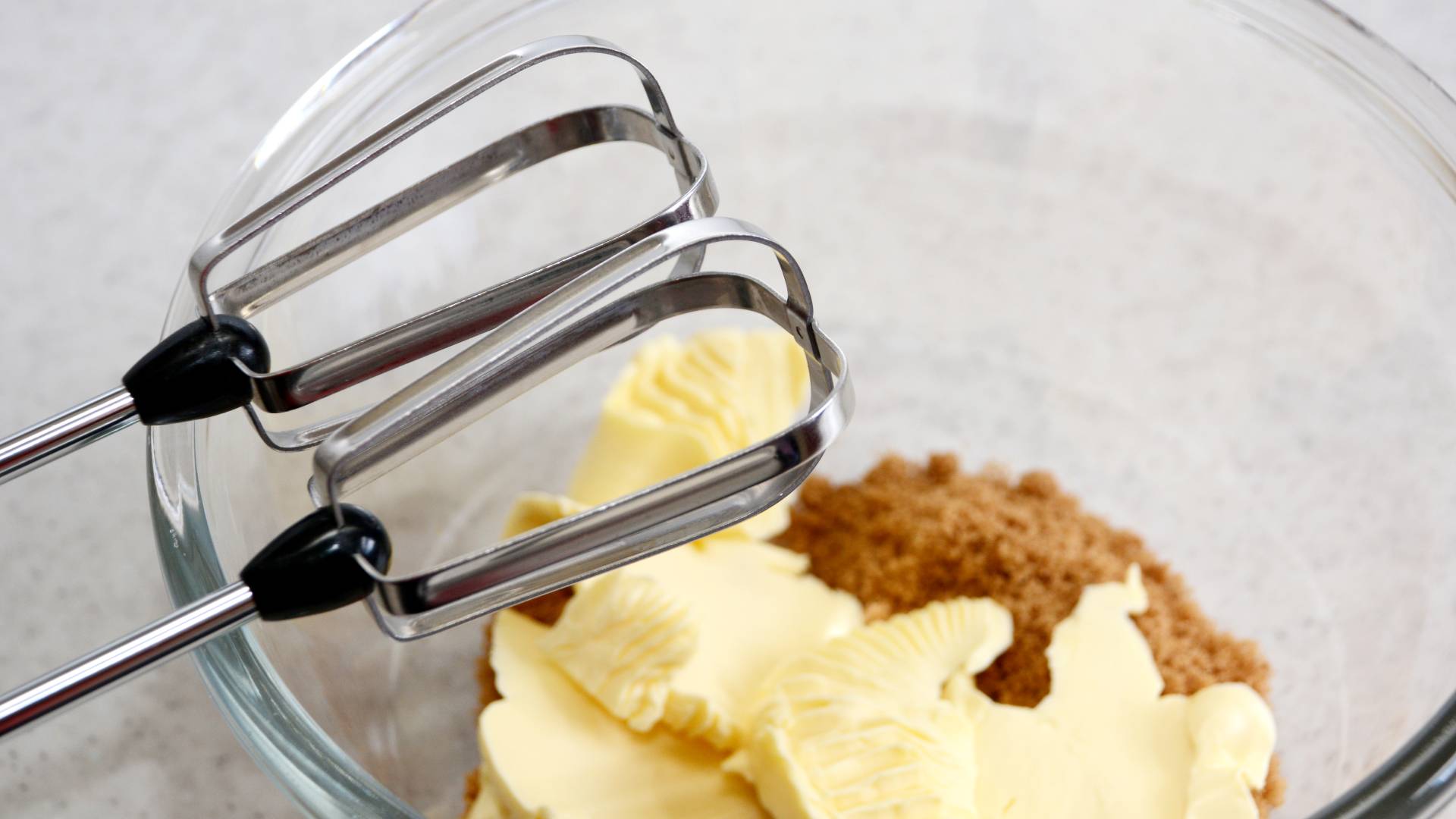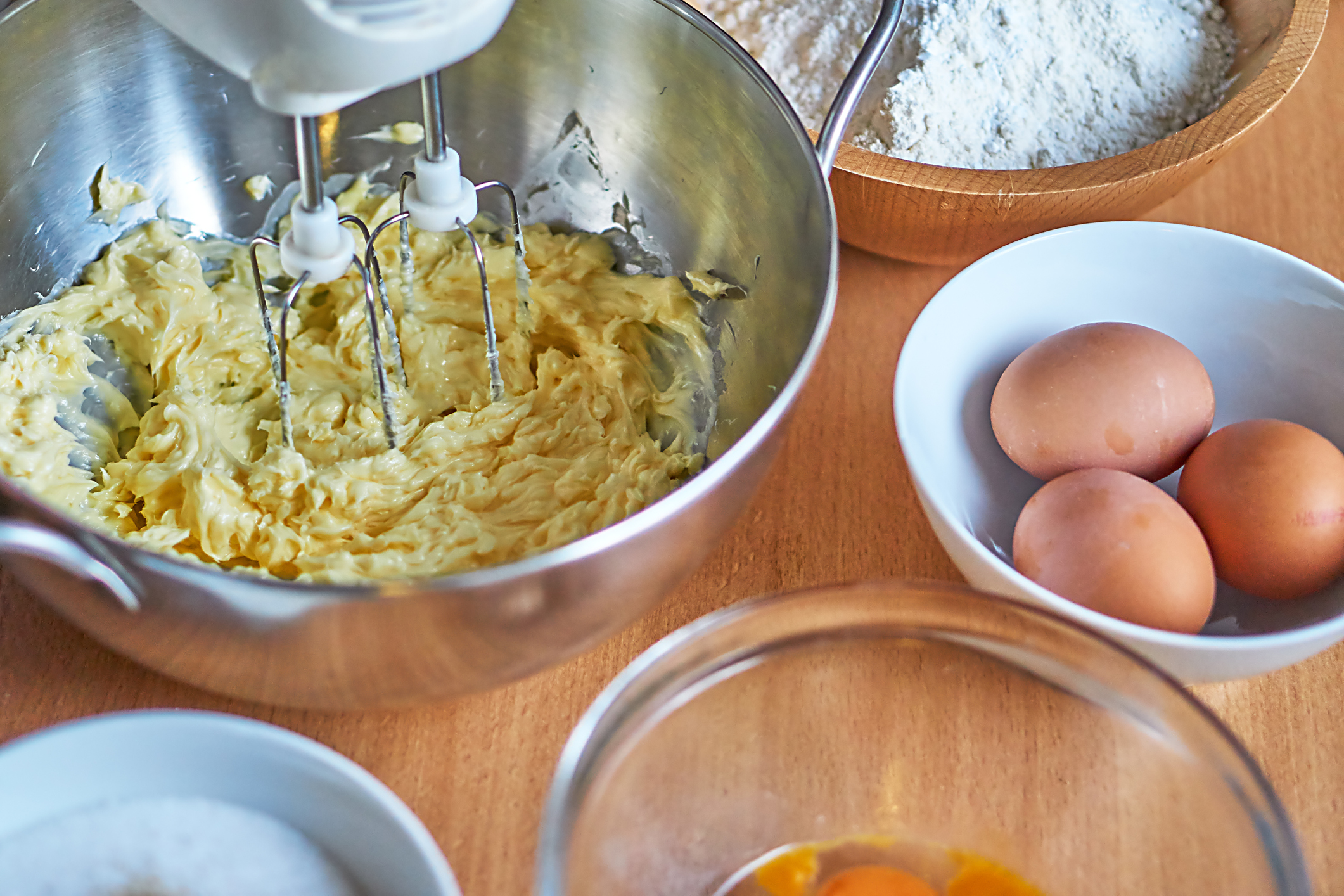How to cream butter and sugar


Everything you need to know about successfully creaming butter and sugar together.
Creaming is a term often used in baking. To put it simply, it means combining fat, usually butter, and sugar together until the mixture becomes soft in texture, lighter in colour, and airier in volume. It is a process that is carried out before adding any other ingredients.
The purpose of creaming the fat and sugar together is to get air into the mixture which helps result in a light, fluffy sponge. Creaming is different from whisking. Creaming is a cookery process whereas whisking is simply the action of mixing something using a whisk.
In this feature, we explain what creaming is, give three methods for achieving it, and provide some top tips for creaming butter and sugar together too.
Whether you’re making fairy cakes or some vanilla cookies, creaming the butter and sugar is a vital step you need to perfect for the best-baked goods...
How long does it take to cream butter and sugar? How to cream butter and sugar by hand How to cream butter and sugar with an electric whisk How to cream butter and sugar with a mixer Top tips for creaming butter and sugar Why is my butter and sugar not creaming? How to fix over creamed butter and sugar What if I forget to cream the butter and sugar?
How long does it take to cream butter and sugar?
Properly prepping your ingredients and the equipment you use will make a big difference in how long it takes to cream the butter and sugar together.
GoodtoKnow Newsletter
Parenting advice, hot topics, best buys and family finance tips delivered straight to your inbox.
The quickest method is to use a stand mixer or a handheld electric whisk and to ensure your butter is at room temperature. As a rough estimate, we would say it will take 3-5 mins to get to the desired colour and volume in this way.
Creaming butter and sugar by hand is by far the most physically demanding method and will take more time and persistence. It uses basic tools such as a large mixing bowl and a wooden spoon, which is good if you’re baking in an environment with limited equipment or space. It will roughly take around double the amount of time to cream butter and sugar this way, especially if the butter is straight from the fridge.
How to cream butter and sugar by hand
Measure your ingredients and ensure the butter is at room temperature. Place in a large bowl and use a wooden spoon to begin pushing the butter and sugar together.
Once you have a rough paste-like consistency, beat the mixture in a circular motion until light in colour and fluffy in texture. This will take at around 10 mins and requires some real elbow grease. This can be a fun stage to let children help with, and it gives your arms a little rest too.
How to cream butter and sugar with an electric whisk

Once again, prepare your ingredients so that they are ready to use. Combine the butter and sugar in a large bowl. Before turning the whisk on, we recommend pushing the butter and sugar together a little, this helps prevent sugar from spitting out of the bowl.
You can also cover the bowl with a tea towel to prevent the mixture from jumping out of the bowl. Once the mix has started to come together, remove the tea towel so that you can monitor the colour and consistency.
Begin at a low speed and then gradually increase. You may want to stop halfway and scrape down the sides of the bowl to ensure the whole mixture is being creamed evenly.
When the mixture is noticeably pale in colour and light and fluffy, you’re ready to move on in the recipe.
How to cream butter and sugar with a mixer
A stand mixer works just the same as a hand-held electric whisk, except you can do other things while it’s working away.
Once your butter is at room temperature and all your ingredients are measured out, place the butter and sugar in the bowl and attach the paddle attachment.
Start at a slow speed and then increase it once everything has come together. You may want to scrape the sides of the bowl down halfway to ensure everything is being mixed in. If you have a splash guard it can be useful to use it here to prevent the mix from spitting out. You can also use the teatowel technique described above.
You can use the whisk attachment here, it will add more air to the mixture and is exactly the same as if you were using a hand mixer. A stand mixer just gives you the opportunity to use the paddle.
Top tips for creaming butter and sugar
The most common mistake people make when creaming butter and sugar together is starting with butter that is too cold.
Rose Fooks, Deputy Food Editor, explains: ‘Starting with room temperature butter is a big help as it will cream faster. I would always use a paddle attachment on a stand mixer or a handheld electric mixer over a wooden spoon. You can cream the butter and sugar together by hand but it will take a little elbow grease and time.’
Food Writer and Cake Designer Keiron George adds: ‘If you want to add lots of zesty citrus flavours, paddle the zest with the sugar for a few mins to extract the oils, then add the butter and cream them both as usual. I always cream my mixture for cakes for 5 mins minimum.’
It’s also important to be patient when creaming butter and sugar together, most people stop too soon. Food Editor Samuel Goldsmith says: ‘My top tip would be to do it until it’s very pale, almost meringue-like. People tend to not cream for long enough.’

Why are my butter and sugar not creaming?
With enough time and patience, your mixture will cream together. If it’s taking longer than expected it’s most likely that your butter wasn’t soft enough.
Remove your butter from the fridge at least 30 mins before you want to use it, longer if your kitchen is very cold. You can cut it into small cubes to help it come up to temp or do short blasts in the microwave.
If you choose to use the microwave you need to check it regularly and ensure the butter doesn’t melt.
Food Writer Keiron has a tip that is perfect if you want the butter to soften quickly. He explains: ‘Cut the butter into cubes and pile it onto a plate in a mound. Fill a bowl with boiling water, leave for a min or so, and pour away. Place the hot bowl upside down domed over the butter and leave for 5 mins.’
How to fix over creamed butter and sugar
If you cream butter and sugar for too long, it will start to split and the butter will separate creating a grainy mixture. It will also look almost white in colour and will have lost the desirable yellow glow from the butter.
Before it reaches the white colour, you could try putting the mixture in the fridge for the butter to firm up a little.
Alternatively, you could add spices such as cinnamon and use them to spread in cinnamon buns or similar bakes. It’s also an indulgent topping to brioche toast if you want a breakfast treat.
What if I forget to cream the butter and sugar?
Creaming butter and sugar is one of the first steps in many cakes and biscuit recipes. It’s vitally important as the rest of the steps will be near impossible to complete and the mixture won’t come together as well. Put simply, you shouldn't skip this step if you want the lightest, softest bake.
If you’ve forgotten to soften the butter use one of the tips mentioned above and then continue with the recipe.

Jessica is a freelance food writer, stylist and recipe tester. She previously worked as Senior Food Writer at Future. While at Future Jessica wrote food and drink-related news stories and features, curated product pages, reviewed equipment, and developed recipes that she then styled on food shoots. She is an enthusiastic, self-taught cook who adores eating out and sharing great food and drink with friends and family. She has completed the Level 1 Associate course at the Academy of Cheese and is continually building on her knowledge of beers, wines, and spirits.